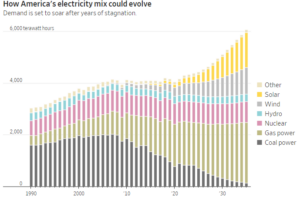Did you know that in 1890, some 90% of U.S. bread was made in homes and just 10% in small urban bakeries? The bread slicer had just been invented and taken the nation by storm, and human achievements since then have been compared to it by saying: “the greatest thing since sliced bread.”
A lot has changed since then. Bakery behemoths today that make up the $14 billion bread industry operate at a pace and scale that would have been inconceivable a century ago. They use large, high-speed factories capable of churning out at least 150 loaves or 800 hamburger or hot-dog buns a minute. Ingredients like flour and oil are piped from silos into giant jacuzzi-sized mixers, where thousands of pounds of dough can be mixed before being divided, shaped, and ferried along snaking conveyor belts into ovens, cooling towers and bagging machines.
But this rough and high-speed journey tears apart a dough’s protein matrix, the weblike structure that traps air bubbles and enables dough to rise. When you let dough collapse as bread pans bounce on their race toward ovens, or sit idle for long periods, the result is a dense, flat loaf. To prevent this, many industrial bread makers add emulsifiers, dough conditioners and other ingredients that help dough withstand the modern manufacturing process. But now all these enhancers are coming under scrutiny for health reasons.
Once you dig into any of these challenges you find we are all faced with tradeoffs. Yes, we can “clean up” some formulations and sometimes even improve the product. But often, something else gets sacrificed. For bread, the most common side effect is reduced shelf life.
Many of you have probably experienced this when you bought that “designer artisanal loaf” only to find three days later you had a science experiment growing on it. How often have you noticed the tastes of some of your snack foods have changed and when you compare the labels you see ingredients that used to make it taste great are gone.
Perhaps you remember my conversation with a Pepperidge Farm plant manager where they made those wonderful Goldfish crackers and I found they had changed the frying oil from one that tended to make us fat to one that was a carcinogen.
How do we define “best” today? How do we know something is better than something else? Shouldn’t we be teaching children to consider life’s choices this way?
Plastic bags for groceries might seem wasteful compared to carrying those sacks you now see, but in fact it takes a lot more energy to make that cloth sack even if you threw that plastic bag away when you got your groceries home. We reuse those plastic sacks a lot.
What is the best thing anymore? Perhaps we really don’t even know and should admit that.




